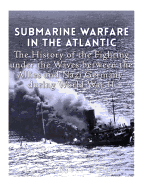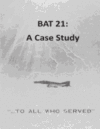Description
Publisher Marketing:
*Includes pictures *Includes accounts of fighting by soldiers on both sides *Includes online resources and a bibliography for further reading *Includes a table of contents “We in the tower were given a chance to view the holocaust. Three vessels lay heavily listing, shooting smoke and fire columns into the air. White lifeboats hung head-down in their davits. Two destroyers raced toward the dying ships. It was a painting of rare and vivid colors.” – U-boat commander Herbert A. Werner, describing a submarine attack in August 1941 (Werner, 2002, 53). Danger prowled under both the cold gray waters of the North Sea and the shimmering blue waves of the tropical Atlantic during World War II as Adolf Hitler’s Third Reich attempted to strangle Allied shipping lanes with U-boat attacks. German and British submarines combed the vast oceanic battlefield for prey, while scientists developed new technologies and countermeasures. Submarine warfare began tentatively during the American Civil War (though the Netherlands and England made small prototypes centuries earlier, and the American sergeant Ezra Lee piloted the one-man “Turtle” vainly against HMS Eagle near New York in 1776). Britisher Robert Whitehead’s invention of the torpedo introduced the weapon later used most frequently by submarines. Steady improvements to Whitehead’s design led to the military torpedoes deployed against shipping during both World Wars. World War I witnessed the First Battle of the Atlantic, when the Kaiserreich unleashed its U-boats against England. During the war’s 52.5 months, the German submarines sent much of the British merchant marine to the bottom. Indeed, German reliance on U-boats in both World War I and World War II stemmed largely from their nation’s geography. The Germans eventually recognized the primacy of the Royal Navy and its capacity to blockade Germany’s short coastline in the event of war. While the British could easily interdict surface ships, submarines slipped from their Kiel or Hamburg anchorages unseen, able to prey upon England’s merchant shipping. During World War I, German U-boats operated solo except on one occasion. Initially, the British and nations supplying England with food and materiel scattered vessels singly across the ocean, making them vulnerable to the lone submarines. However, widespread late war re-adoption of the convoy system tipped the odds in the surface ships’ favor, as one U-boat skipper described: “The oceans at once became bare and empty; for long periods at a time the U-boats, operating individually, would see nothing at all; and then suddenly up would loom a huge concourse of ships, thirty or fifty or more of them, surrounded by a strong escort of warships of all types.” (Blair, 1996, 55). World War I proved the value of submarines, ensuring their widespread employment in the next conflict. Besides Germany and Britain, Japan and the United States also built extensive submarine fleets before and/or during the war. One critical innovation in World War II’s Atlantic U-boat operations consisted of wolf-pack tactics, in which Admiral Karl Dönitz put great faith: “The greater the number of U-boats that could be brought simultaneously into the attack, the more favourable would become the opportunities offered to each individual attacker. […] it was obvious that, on strategic and general tactical grounds, attacks on convoys must be carried out by a number of U-boats acting in unison.” (Dönitz, 1990, 4). However, even the wolf-pack proved insufficient to defeat the Atlantic convoys and stop Allied commerce – the precise opposite of the Pacific theater, where America’s excellent submarine forces annihilated much of Japan’s merchant marine and inflicted severe damage on the Imperial Japanese Navy.






Reviews
There are no reviews yet.